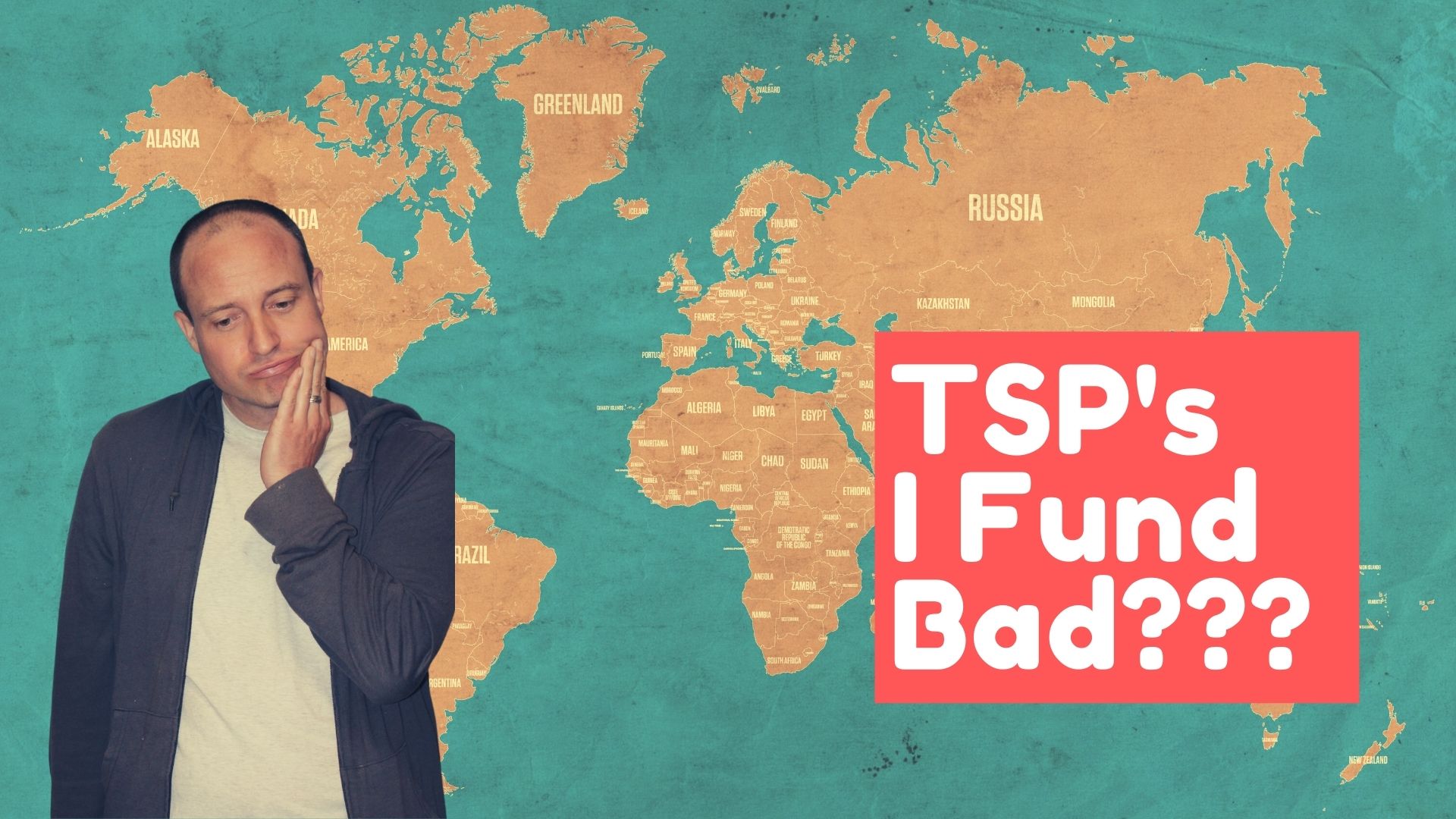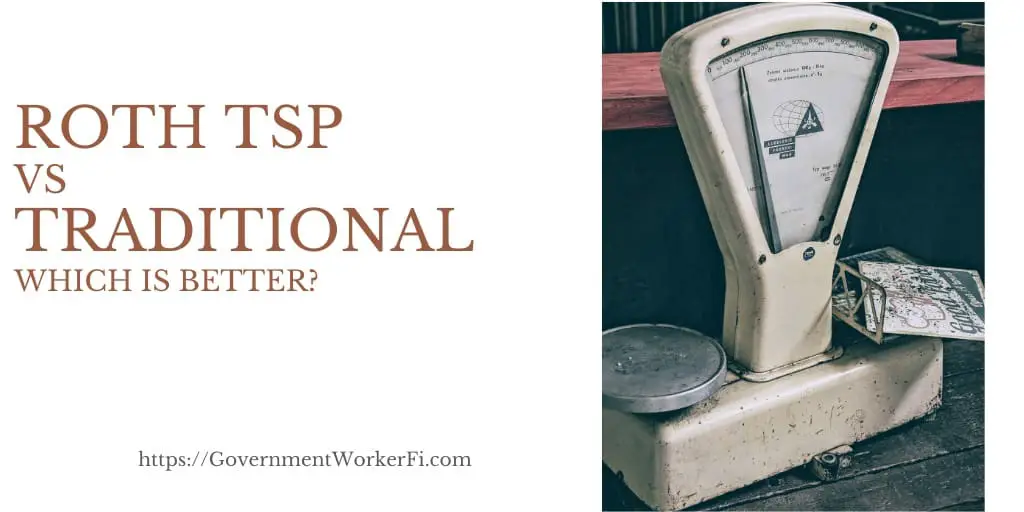They say that you “can’t take it with you” and that “the only two certainties in life are death and taxes”.
If you’ve been lucky enough to accumulate a lot of wealth in your TSP over your life, congratulations- you’re probably going to enjoy a comfortable retirement. However, the bad news is that you’re going to be forced to pay taxes as you take that money out of the TSP with required minimum distributions or RMDs.
RMDs are a feature of lots of traditional retirement plans, such as IRA’s, 401(k)’s, 403(b)’s, 457(b)’s, etc. However, there are some special TSP RMD rules you should know.
I wrote this article to address any questions you might have about required minimum distributions in your TSP.
Get Gov Worker’s top 4 tips for federal employees!Table of Contents
- What is a required minimum distribution and why do I need to take one?
- Recent legislative changes to RMDs
- What is a TSP and is it different from a 401(k) or an IRA?
- How Thrift Savings Plan required minimum distributions (TSP RMD’s) work
- Wait- Roth TSP has RMDs too!?!?
Please do not confuse my personal blog for financial advice, tax advice or an official position of the U.S. Government. This post may contain affiliate links. If you make a purchase after clicking on a link, I get a small percentage of the sale at no additional cost to you.
What is a required minimum distribution and why do I need to take one?
When you put money in a tax deferred retirement account, such as an IRA or your TSP you don’t have to pay any taxes. This is the government’s way to encourage you to save for retirement.
However, the government doesn’t want to encourage you to save too much money for retirement. Once you get into your 70’s, the government wants to see you spend down your IRA/TSP/403(b) etc. They want a chance to collect taxes on that money that they agreed to let you save without taxes during your working years.
It doesn’t matter if you are lucky enough to not need to touch your retirement accounts… the government will require you to withdraw some of your retirement savings. This amount is the minimum amount of money you need to take out of your retirement account, so it is called a required minimum distribution.
Since withdrawals from tax deferred retirement accounts are treated as taxable income, your RMD will affect your tax bracket, your taxes on social security, and the amount you pay for Medicare Part B.
Should I fear RMDs?
If you’ve read as many personal finance articles as I have, you’ll often come across telling people to put all their money in Roth accounts. Two of the main arguments come down to RMDs.
- If you are a successful retirement saver, you could be forced to take large RMDs in your 70’s and 80’s. Since these are treated as taxable income, you may be in a high tax bracket (potentially even higher than the one you were in when you made your retirement contributions).
- We have no idea what future tax rates will be. Some alarmist voices claim that with the US budget deficits the government faces today we will be forced to return to a time of Eisenhower’s 94% tax rate by the time you will retire.
![Required minimum distributions (RMDs) and your TSP [ultimate TSP RMD guide] 1 Reasons why the internet wants you to fear your TSP RMDs](https://cdn-0.governmentworkerfi.com/wp-content/uploads/2022/08/Should-you-fear-RMDs-image.jpg)
Here is my take
- If you are a high income/net worth individual, you should be working with a CPA to come up with a tax management strategy, not taking random internet advice. (Here’s what I learned when I talked with a CPA about my retirement strategy). Please see disclaimers at the top of the post, these bullet points are my random thoughts and not financial advice.
- If you are forced to take RMDs that put you into a high tax bracket in retirement, then you’re probably doing pretty good. Most Americans are worried about not having enough money in retirement; 40% of Americans have nothing saved for retirement. Complaining about paying taxes on your $200,000 per year RMD on your $6,000,000 retirement account balance is just gauche.
- We can’t predict the future. However, given all of the battles we have seen in Washington over the past decades makes me very skeptical we’d return to Eisenhower level tax rates. If I have to choose between a guaranteed tax break today vs paying taxes on a hypothetical punitive future tax rate, I’m putting money on the status quo. Also, it’s worth asking yourself if Congress has the willpower to raise taxes on retirees by changing taxes on TSP withdrawals or if they’d rather find a more politically expedient tax (See more info on the SECURE act and proposed SECURE 2.0 act later in this post).
- If you want a more detailed example calculation, I showed that if your tax bracket remains the same during your work life and retirement life, it doesn’t really matter if you put money in the Roth or Traditional TSP. If you’re a federal employees with a FERS pension, I would guess that there’s a high probability you’d be in the same tax bracket in retirement.
I’ve tried to lay out the arguments for and against Roth and Traditional accounts. Personally, we have our assets distributed across both types of accounts. I think the loudest voices about Roth accounts are a little bit alarmist, but I don’t disagree that Roth accounts are a great option and should be one tool in your retirement arsenal. (But maybe not the only tool).
Recent legislative changes to RMDs
Since 2019, Congress has been looking closely at how retirement accounts work and making adjustments to traditional retirement accounts. This includes changes to required minimum distributions in retirement accounts, including your TSP that make them more favorable for you to use.
The Setting Every Community Up for Retirement Enhancement Act of 2019 (SECURE Act) increased the age at which you must take RMDs to age 72 instead of age 70.5. This is great for anyone with money in a traditional retirement account as you will have more time to take distributions at a lower tax rate before RMDs kick in.
However, there is also proposed legislation for a SECURE Act 2 that has passed the House of Representatives. If this legislation were to pass, it would increase the age of RMDs to 75 (for those who turn age 74 after the year 2032). It further reduces the tax penalties for not taking an RMD.
As you can see, Congress is using these tools to effectively reduce taxes on people with money in traditional retirement accounts. (Something to keep in mind when you read an article to convert all of your money to a Roth account today regardless of the tax penalties because the national debt will require higher taxes.)
What is a TSP and is it different from a 401(k) or an IRA?
Hopefully by now you understand what RMDs are and how they work. And I’m guessing you found this article because you’re a federal employee or uniformed services member with a TSP. But just for thoroughness I thought I should add a few words about what a TSP is and how it works.
The Thrift Savings Plan (often just called the TSP) is a defined contribution plan similar to a 401(k) that is only open to government employees. Unlike private sector 401(k)’s, investors are in general restricted to index funds for investment. These five funds (common stocks, small & mid cap stocks, international stocks, bonds, and short-term government securities) are all you should need to build a balanced portfolio.
While the TSP has a Roth option, the 5% government match will be placed in a traditional retirement account. So at retirement, all federal employees will have at least some of their TSP balance in a traditional account.
How Thrift Savings Plan required minimum distributions (TSP RMD’s) work
A long time ago, the computer systems at the TSP couldn’t handle required minimum distributions. They basically shut down your TSP at age 70 and you needed to withdraw all your money or purchase a TSP annuity. This all changed with the TSP Modernization Act of 2017, which I described in this earlier blog post about the TSP 70 form.
But that’s ancient history.
Now if you have a TSP you can set up lots of different withdrawal options, including monthly, quarterly, or annual installment payments.
Another important thing to know is that if you don’t withdraw enough money to satisfy your RMD, the TSP will automatically withdraw that money for you and send it to your address. This is great news, because this helps insure that you won’t mess up your RMD and get hit with a 50% tax penalty.
Special note about your first TSP RMD
Technically, you don’t need to take your first RMD until April 1st the year after you turn 72. While this can help you avoid taxes in one calendar year, there is no free lunch. That’s because if you wait until the April after you turn 72, you’d need to take 2 RMDs in the calendar year you turn 73.
Confused?
Let’s say you turn 72 in October, 2025. You could take your 1st RMD sometime from January-March 2026. However, sometime in 2026, you’d need to take a second RMD.
Obviously, this is where working with a CPA could really pay for itself. They can analyze your investment balances and help you plot out a course for tax minimization.
Wait- Roth TSP has RMDs too!?!?
While we are on the topic of required minimum distributions, there’s something else you should know. Unfortunately, the TSP requires RMDs on Roth contributions.
Unlike traditional accounts, where RMDs are a fact of life no matter the account type, Roth TSP RMD’s are a unique feature of the TSP.
Since you worked hard to pay taxes and protect that money in a Roth account, I’m guessing you probably don’t want to have to withdraw that money through RMDs.
There’s is an easy workaround though– you can just roll your Roth TSP into a Roth IRA after you separate.
Summary
I hope you have a better idea about how TSP RMDs work. How and when you structure your TSP withdrawals to minimize taxes on RMD is really a personal question and not something I can answer for you. However, if you have generally TSP questions, you can always drop them in my Facebook Community and see what the hive-mind says.




